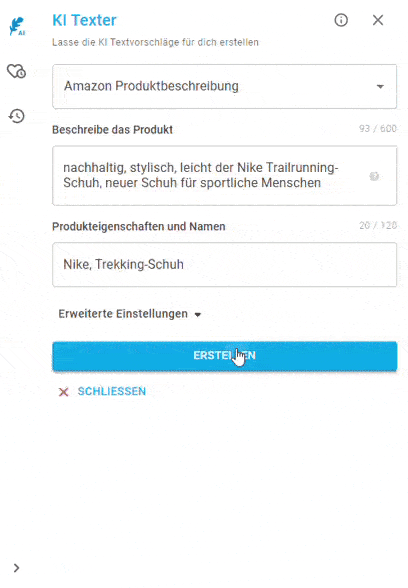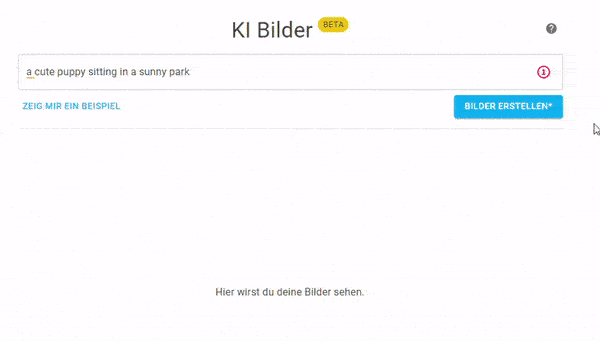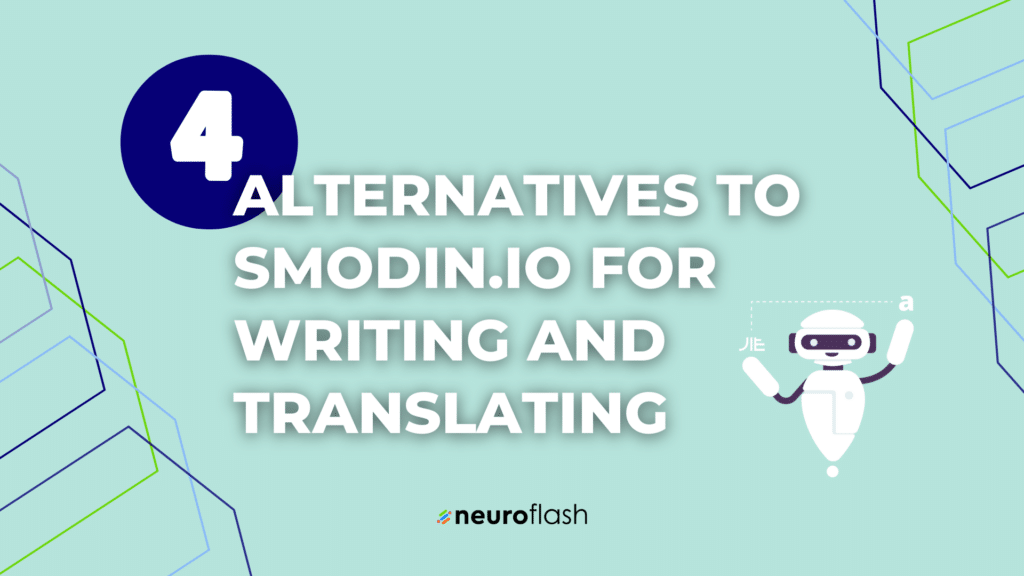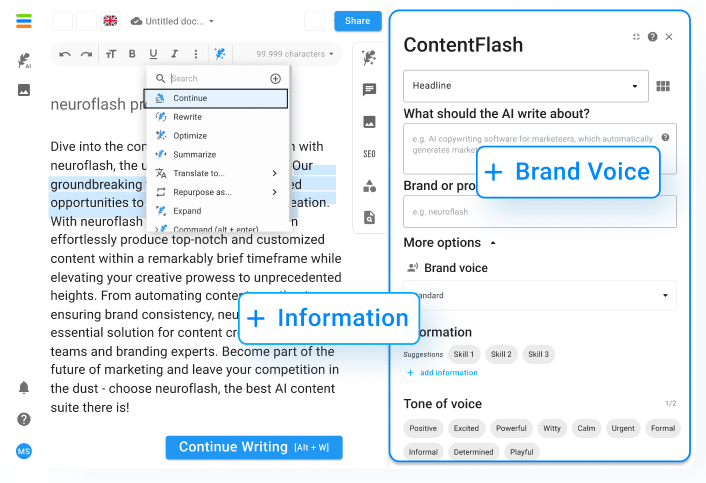Copywriting is an important skill that every entrepreneur and online marketer should master. But what exactly is it and what copywriting examples are there for a successful result? In this article you’ll find out!

Copywriting is an art that not everyone has mastered. A good copywriter knows how to use his words to grab readers’ attention and move them to action. Unfortunately, there are always bad examples that are either completely incomprehensible or just boring. In this article I would like to present you some examples of good and bad texts.
You may have noticed that some advertising copy is just meaningless gibberish. They promise the moon, but in the end it’s all just hot air. These are bad because they only confuse readers and don’t give them a clear message. A good copywriter, on the other hand, knows exactly what he wants to communicate and formulates his thoughts clearly and understandably. Another problem with bad texts is that they are often far too long. No one feels like struggling through a huge jumble of words. Good texts, on the other hand, put readers in a positive mood and inspire them to take action. They are written clearly and understandably and provide readers with exactly the information they need. A good copywriter also knows how to work with emotions and which buttons to push on readers to get them to act. Of course, there are exceptions, but as a rule, the shorter the better.
What does copywriting mean?
The word originally comes from English and means something like “writing texts”. The term is often used in advertising and marketing to refer to copy written to market a product or service. It is the ability to write blogs or advertisements that achieve a certain effect. Most entrepreneurs and online marketers use it to promote and sell their products or services. There are different types of copywriting, but the basis of all good copy is always the same: it must engage the reader and make them want to do something. So, if you want to write a text that creates a certain effect, you must first figure out what effect you want to create. For example, do you want your readers to buy a particular product? Then you should write your text in such a way that it achieves this goal.
Copywriting for entrepreneurs and self-employed
As an entrepreneur or self-employed person, you need effective copy to convince your customers. Whether you’re writing a website, a brochure, or a proposal, it should be clear and understandable and convince your customers of your product or service. This is not as easy as it sounds. After all, as an entrepreneur or self-employed person, you are usually not a professional writer. Of course, you can write texts, but that is no guarantee of a convincing style. That’s why it’s important to make yourself aware of what matters in writing. A good writing style is characterized above all by clarity and simplicity.
If you’re an entrepreneur or self-employed person struggling to write product descriptions, several tools like neuroflash can help. The AI generator offers several options for optimal results, allowing you to generate and optimize content in a matter of seconds. Just try it out here.

How to address your target group
Before you run a Facebook ad, you should think about who you want to reach with it. Do you just want to generate traffic? Or do you want people to convert (buy something or sign up for something, such as a newsletter) right away on your landing page? Want more followers for your Facebook page or more interactions for your Instagram posts? These questions are relevant because depending on which target you choose, Facebook will give you different results. For example, if you’re aiming for conversions but going for traffic, your Facebook Ads costs will go up because you’ve chosen the wrong target and Facebook is sending you the “wrong” people.
What you should look for when writing copys
When writing, it is important that the text is captivating and engaging. It should take the reader on a journey and engage them in the story. To do this, it is necessary to take a strong stand, provide the reader with background information and back it up with personal experience. Finally, the text should end with an upswing. It is important to always keep the audience in mind – after all, you don’t want to offend or bore anyone!
Copy should be persuasive and have a clear writing style. The important thing is to appeal to the reader and get them to do something. To do this, the text must be clear and understandable. In most cases, it is best to write a copy simply and understandably. This way, you can make sure your message gets across and your readers understand what you want. Of course, there are always exceptions, but as a rule, keep it simple!
A copy should be short and concise and convey the essential information. It should engage the reader and make them want to read on or perform an action. To do this, it is important to strike the right tone and speak the language of the target group. The layout also plays a role: headlines, paragraphs and images should grab the reader’s attention and make the text scannable.
Tips for better writing
- Find your own style and stick to it – you’re not Shakespeare, so don’t try to write like him. If you stay true to yourself, you will come across as authentic and your readers will trust you.
- Write compelling stories – most people are interested in stories because they can tell us about other people and make us empathize. So if you tell a good story, it’s more likely that people will stay tuned to the end.
- Make a strong point – you may not have an opinion on everything (and that’s okay), but when it comes to issues you care about or where someone asks you “Where do you stand on this?” be bold and voice your opinion! Of course, you should also research the background and reflect on whether your argumentation is coherent – but feel free to give yourself some credit.
- Back up point of view with facts/evidence – The stronger your point of view, the more passionate you can report; however, I still always advise you to cite facts or use real-world examples so that people can follow you more credibly.
Good and bad copywriting examples

Remember that most readers are unfamiliar with the topic, so take them by the hand and lead them into the story. If you can’t think of anything else, start with people’s greatest motivation. Make a strong point, provide some background information, prove to the reader with a personal story that the point is true, and close with an upswing. Consider the audience. It’s important to write good copy because it allows you to sell and market effectively. Readers can feel engaged with great copy and transfer that sense of connection to the product or brand you’re writing for. Take a look at 5 good and 5 bad examples of your copywriting here:
Here are 5 good copywriting examples:
- Apple: “Think Different
- Nike: “Just Do It
- Starbucks: “Live Your Dreams”
- McDonald’s: “I’m lovin’ it!”
- Coca-Cola: “Open Happiness”
Why they are good? A short copy is better because it is easier to read and understand. Also, readers stick better to short texts because they don’t have to invest as much time and effort in reading. If you’re looking for even more examples, you can find them here.
Here are 5 bad copywriting examples:
- “Buy now while supplies last!” This is a very obvious attempt to encourage people to buy by having fear and haste. However, there is no reason why the supply should run out soon, and it just comes across as implausible.
- “This is the best deal ever!” If you say or write this, you must also be able to prove why it is true. Otherwise, it just seems like another cheap trick by the seller.
- “We are number one in business!” That may or may not be true – but without evidence, it doesn’t sound credible to many people at all. Why should they believe you? Give them something concrete!
- “With our product/service you are guaranteed to earn 10 000€ per month!” Again, without evidence, it is not credible! No one blindly chases money – especially not in times of crisis and recession. Instead, show your customer realistic examples of success.
A good copy...
- …is one that appeals to your target audience and gets them to visit your website or buy your product.
- …should be clear and precise. It should not try to teach too many things at once.
- …should play on emotions and make readers identify with the product or website.
- …should provide value to readers and show them how the product or website can improve their lives.
- …should conclude with a call-to-action so readers know what to do next.
The 5 best tips for better copywriting
- Write for your audience and not for yourself. Always remember who your target audience is and what they are interested in. So write something that really interests them, not something you think is interesting.
- Keep it short and to the point. People’s attention span isn’t very long these days, so you shouldn’t make your texts too long and complicated. Just say it in a few concise sentences.
- Make sure you have a good structure. A text should always have a good structure so that it is easy to read and it is clear to the reader what it is about. So make a clear thread through your text and don’t just write everything in a jumble.
- Use simple words and phrases. Avoid complicated words and phrases that are difficult to understand. Write in such a way that even someone who is not an expert in the subject can understand the text.
- Be creative. Boring texts are not particularly interesting and are also often read over. So be creative and bring some excitement into your text!
A good text always needs appropriate and sophisticated images. With the AI image generator from neuroflash you can create optimal results for your blog. Just enter a description in the search field and you’re ready to go. Try it out here.

Frequently asked questions & answers
What is the purpose of copywriting?
The purpose of copywriting is to promote a specific product or service and generate sales. To achieve this, the copywriter must convince the potential client that the product or service is exactly what he/she is looking for. This is usually done by using convincing arguments and examples.
How can I learn copywriting?
There are several ways you can learn it. One way to do this is to learn about the subject yourself. For example, you can read books or online articles, such as this one, on the subject. Writing your own texts also helps in learning the techniques. Another option is to take courses or get advice from an experienced copywriter. This is especially helpful if you already have experience in writing and want to deepen your knowledge. Copywriting is an important skill if you work in the advertising or PR industry. However, it is also beneficial for many other professions, as good texts are always in demand.
How can I make money with copywriting?
Copywriting is a great option for people who are creative and can put their ideas into words. If you’re a good writer and enjoy inventing and marketing new concepts, copywriting is for you. There are many different types of copywriting jobs you can find online. Some people prefer to write for a specific website or company. Others prefer to freelance and write for multiple clients at once. No matter which route you choose, copywriting is a great way to make money online.
How do I write a good CTA?
A good CTA is short, concise and contains a clear call to action. It should motivate the reader to perform the desired action and help them identify the next step. When writing your CTA, make sure it is clear and leaves no questions unanswered.
Useful tips on copywriting examples
- Be creative! Think outside the box and create something truly unique.
- Pay attention to your spelling and grammar. Nobody takes a poorly written text seriously.
- Keep it short and sweet. No one has time for a novel, so be precise in your message.
- Use bullet points to make your text clear. This helps the reader to grasp the main points.
- Make it visually appealing. Use colors and images to make the text more interesting.
- Use quotations to support your argument or makeyour point.
- Always stay honest and transparent – no one likes to be lied to!
Conclusion
Copywriting samples are a great way to improve your own blog or website content. By studying different types of copywriting examples, you can learn how to write and optimize your own copy to attract more readers. In addition, by studying copywriting examples, you can also find out what mistakes you should avoid in your own writing. If you want to read about how neuroflash has helped different companies with their marketing, click here.























